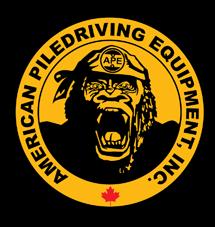Refurbishment of a piled commercial building

Battery-powered LB 30 breaks ground in the middle of Calgary’s icy winter
Profile: Keller’s Catherine Chauder is dedicated to creating a safe workplace
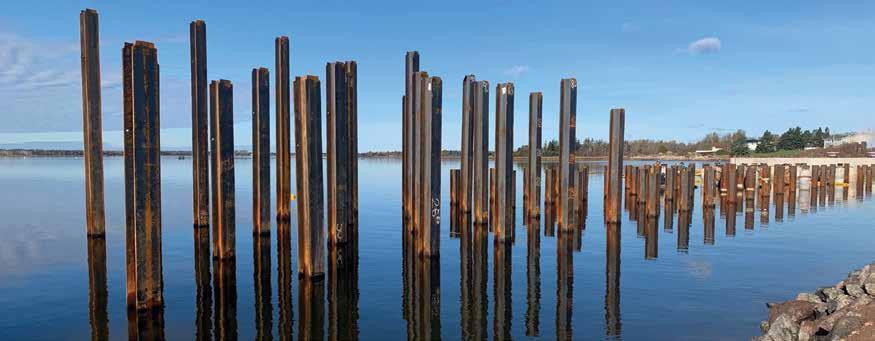



Battery-powered LB 30 breaks ground in the middle of Calgary’s icy winter
Profile: Keller’s Catherine Chauder is dedicated to creating a safe workplace


n The only supplier to offer the entire range of steel foundation and geostructural products
n Manufacturing, coating, fabrication, and engineering expertise
n As a part of the Nucor family, our ability to service our customers and the industry as a whole is unparalleled
H-Piles, Steel Sheet Piles*, Pipe Piles, and Structural Sections with boron content of less than 0.0008%
* Please contact your local Nucor Skyline sales office for additional information.



n Premier manufacturer of cold formed steel sheet piles with 30+ years of experience
n Wide range of shapes available for all applications
• Elastic Section Modulus: 2.55 in³/ft to 62.32 in³/ft
• Moment of Inertia: 4.5 in⁴/ft to 560.85 in⁴/ft
• Thickness: 0.157 in to 0.55 in
n Available in numerous steel grades including ASTM A572, ASTM A588, and ASTM A690
n Manufactured in custom lengths with industry leading delivery times
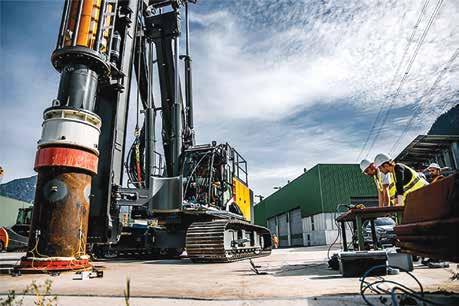
President & CEO: David Langstaff
Managing Editor: Lyndon McLean lyndon@delcommunications.com
Sales Manager: Dayna Oulion
Advertising Account Executives: Jennifer Hebert Michelle Raike
Production services provided by: S.G. Bennett Marketing Services
Creative Director / Design: Kathleen Cable
© Copyright 2024.
DEL Communications Inc.
All rights reserved.The contents of this publication may not be reproduced by any means, in whole or in part, without prior written consent of the publisher.
While every effort has been made to ensure the accuracy of the information contained herein and the reliability of the source, the publisher in no way guarantees nor warrants the information and is not responsible for errors, omissions or statements made by advertisers. Opinions and recommendations made by contributors or advertisers are not necessarily those of the publisher, its directors, officers or employees. Publications





Equipment Corporation of America (ECA) announced in February the promotion of Rod Kern to Vice President. This promotion marks a significant milestone in ECA’s commitment to leadership excellence and continued growth. Rod Kern represents the fourth generation of the Kern family at ECA.
Rod’s background in geotechnical engineering, underscored by his education from Penn State (B.S. – Civil Engineering) and Cornell University (M.Eng. –Geotechnical Engineering, MBA) along with internships at Menard USA, Civil & Environmental Consultants and Malcolm Drilling were instrumental in a successful start to his career.
After completing his graduate studies, Rod’s professional journey began in 2016 as a staff engineer at Moretrench before being promoted to assistant project manager with Keller North America. A licensed Professional Engineer in Pennsylvania, he began his journey with ECA as Applications Engineering Manager in the ECA BAUER Service Team. Since joining ECA in 2020, his expertise in geotechnical engineering and deep foundation construction has been pivotal in advancing
ECA’s capabilities in providing practical and economical solutions to complex challenges.
“Rod has excelled in everything that’s been asked of him since returning to Pittsburgh in 2020,” said Roy Kern, President and CEO of ECA. “His knowledge of our equipment, applications, and the ability to relate to our customers is excellent. We look forward to his continued growth and success at ECA.”
ECA has been a leading supplier of foundation construction equipment for more than a century. We are the exclusive distributor for BAUER Drilling Rigs, KLEMM Anchor and Micropile Drilling Rigs, RTG Piling Rigs, and BAUER MAT Slurry Handling Systems. We also distribute HPSI Vibratory Pile Hammers, WORD International Drill Attachments, Pileco Diesel Hammers, Dawson Construction Products, ALLU Ground Improvement Equipment, Pile Master Air Hammers, DIGGA auger drives, Furukawa Rock Drills, Boart Longyear Surface Coring Drills and Olin Concrete Pumps. ECA offers sales, rentals, service, parts, and training from 11 facilities throughout the eastern U.S. and all Canadian provinces. l






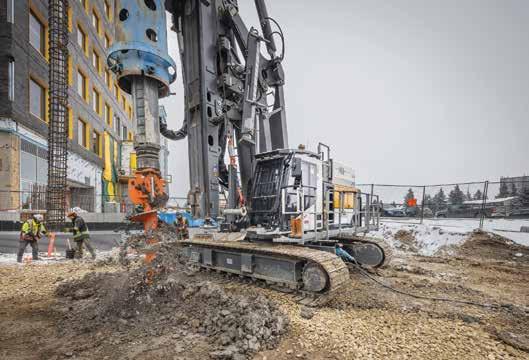
Calgary has a clear goal: to reduce greenhouse gases. Part of the climate strategy is the use of emission-free technological innovations. With the first battery-powered unplugged model on Canadian soil, this strategy is also being consistently pursued in construction projects. During the construction of a new pedestrian overpass, contractor Graham and deep foundation subcontractor Ki International Ltd. put the LB 30 unplugged drilling rig purposely to the test with difficult drilling work and temperatures as low as minus 36 degrees.
“We saw the LB 30 unplugged as an opportunity to do something good for our society,” explains Gordon Williamson, owner of Ki International Ltd. “It is imperative that construction machines with electric drives have a future in Canada in order to steer our economy toward sustainability.”
The construction site where the machine is being used is located in a busy area in northwest Calgary, Alberta. There are important centres here, including the Foothills Medical Centre, the Calgary Cancer Centre, and the UXBorough project. The new pedestrian overpass facilitates access for the population and promotes growth in the area.
Ki International Ltd. is using the Kelly method with the Liebherr drilling rig to construct 22 cast-in-place piles for the overpass. The largest of these have a diameter of 1,000 mm and are 18 m deep. Mud, water and sand make the ground very soft, which is why the entire drilling depth has to be cased.
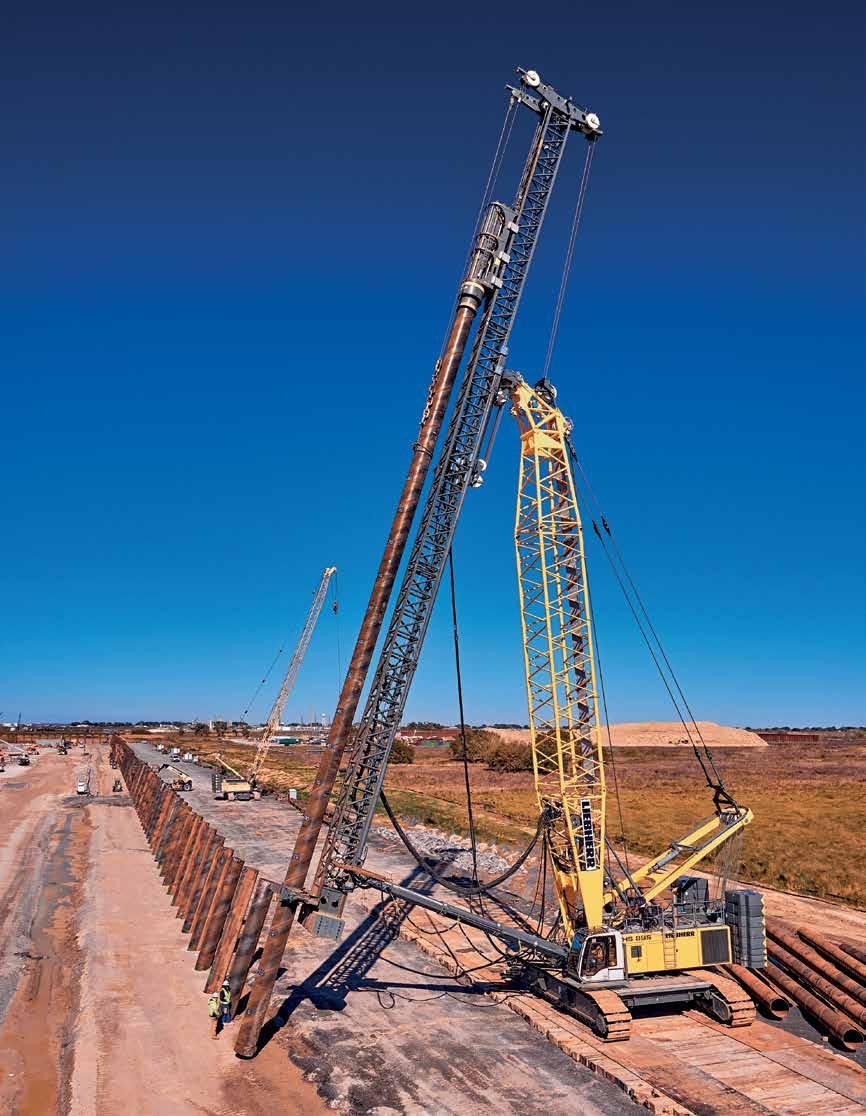
“We
The biggest challenge for the work was the cold Canadian winter. Temperatures dropped to -36 degrees, and it felt even icier in the wind. Nevertheless, the work had to be started in January. “There were no delays with regard to the performance of the drilling rig,” says Janelle Bekkering, Project Manager at contractor Graham.
The direct location of the construction site next to a large hospital makes one advantage of the LB 30 unplugged particularly significant: the low noise emissions. The passage of emergency vehicles must be ensured at all times, even during ongoing construction site operations. The quiet operation of the machine means that emergency vehicles can be heard more clearly, which considerably improves safety for
medical staff and patients as well as for construction site staff. The low noise level is particularly appreciated in urban and densely built-up areas.
Jason Lin, Project Manager for the City of Calgary, is also enthusiastic about the alternative drive system of the LB 30 unplugged.
“We are proud that this emission-free technology is being used in Canada for the first time.” Lin says. “Zero emission aligns with our policies and our climate strategy. The use of such machines will help us to reduce greenhouse gases. That is very important for us.”
Gordon Williamson summarises the first use of the drilling rig on Canadian soil with satisfaction: “We wanted a difficult task. One that would really put the machine to the test. We got what we
wanted. On this construction site, we have proven that the LB 30 unplugged is able to deal with difficult drilling work and extreme weather conditions.”
The Liebherr Group is a family-run technology company with a highly diversified product programme. The company is one of the largest construction equipment manufacturers in the world. It also provides highquality, user-oriented products and services in a wide range of other areas. The Liebherr Group includes over 150 companies across all continents. In 2023, it employed more than 50,000 staff and achieved combined revenues of over 14 billion euros. Liebherr was founded by Hans Liebherr in 1949 in the southern German town of Kirchdorf an der Iller. Since then, the employees have been pursuing the goal of achieving continuous technological innovation and bringing industry-leading solutions to its customers. Under the slogan “75 years of moving forward”, the Group celebrates
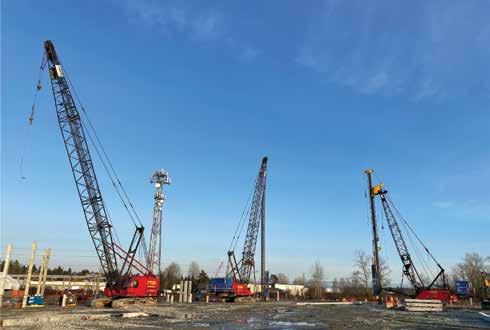
As Canada’s largest Marine Construction, Land Foundations and Dredging contractor, FRPD is a recognized leader that employs state of the art methods and equipment. FRPD’s team of highly skilled professionals brings more than 100 years of experience and commitment to exceeding expectations.
Learn more at:
Ki International is an Alberta-based, family owned, piling contractor and
Western Canada. Ki’s expertise in civil infrastructure, light industrial, power, commercial construction, residential and oilfield construction has been proven with its excellent reputation for completing projects safely, on-time, onbudget and with a high-quality finished product. As part of its ongoing business practices, culture, and commitment to continual improvement, Ki International Ltd. is advancing innovative and sustainable construction technologies in Alberta. l


This article was originally published in DFI’s bi-monthly member magazine, Deep Foundations, May/June 2024 issue. DFI is an international technical association of firms and individuals in the deep foundations and related industries. To join DFI and receive the magazine, go to www.dfi.org.
Providing a safe working environment protects a company’s most important asset, its people. It also boosts morale, improves job performance, saves precious time, and has a positive impact company-wide. For Keller, Alberta, the person at the forefront of the firm’s model safety effort is Catherine Chauder, CRSP, CSP, the company’s health, safety, environment, and quality (HSEQ) manager. Her task is to lead and manage a staff of HSEQ coordinators across three Canadian provinces, Alberta, Saskatchewan, and Manitoba. Keller, Alberta is part of Keller’s international consortium of firms across the globe that collectively cover the entire spectrum of geotechnical engineering and construction specialties. Founded in 1860 in Renchen, Germany, and registered in England, the Keller shield covers 10,000 employees in 40 countries.
Chauder has been with Keller since 2018. She has been a safety professional since graduating from Toronto Metropolitan University (TMU) with a bachelor ’s degree in occupational health and safety in 2015. Prior to enrolling at TMU she completed a bachelor’s degree in psychology at Saint Francis University in Antigonish, Nova Scotia, in 2013.
Chauder admits that while at university in Nova Scotia, a definitive career choice wasn’t at hand. She considered psychology, biology, and computer science. When she graduated with her degree in psychology, and after a good deal of research

into how to best use her interests and skillset, she found that applying those skills and instincts to the field of construction was the way to go. She knew that she didn’t want to be an engineer so that was out. The idea of working in construction management, or occupational health and safety would be a better fit. After considering both avenues she decided that safety was “it,” and, as she puts it, “on a whim,” moved to Toronto to enroll at TMU to pursue a degree in occupational health and safety. After the first day of classes, she knew that she had made the right choice.
Chauder’s first job as a safety professional was with an oil & gas company in Alberta. It was there that she met Jennifer Dominie. She was a mentor in more than just safety. She
describes Dominie’s influence, “She was a new graduate like me with the same passion for safety. Even though she was my peer she mentored and taught me more than anyone else, not just about safety and the oil and gas industry, but she pushed me to maintain integrity during my biggest career challenges. We didn’t have any women in positions above us to be our role models and mentors, so we decided to be each other’s.”
Dominie felt the same way about Chauder. She tells us, “In the challenging realm of Alberta’s oil sands, Catherine shined as a beacon of hard work, determination, and a steadfast commitment to safety. Long shifts, time away from family and friends, combined with a harsh working environment can make it particularly difficult. Catherine’s unwavering determination and her friendly demeanor helped her navigate these hurdles while gaining the trust of her colleagues.” She goes on, “This particular skillset helped the operations team truly make safety a core value and reach their safety goals.”
When Chauder joined Keller in 2018, HSEQ Director Josh Dwyer was her hiring manager. He has been a strong advocate ever since. She credits him with helping in her development as a safety professional and in her roles at Keller. Dwyer, returning the compliment, tells us, “Catherine has not only been a critical team member for the HSEQ department, but for the entire Canadian business unit. She is dedicated to creating a safe workplace and excels in everything she does. She has pushed all of us down the path of continual improvement and is always there to help.”
Chauder points out that safety is all about changing and maintaining a culture. We know that in order to build a “culture of safety” in any operation, commitment must come from the top down and at the same time from the bottom up. This commitment and its resultant behaviors cannot be a “sometimes thing.” It has to be an all-day-everyday fundamental mindset, otherwise a program will not be effective.
She notes, “Safety is a changing field. You’re not always everyone’s favorite person, so you have to be able to handle tension and effectively perform your duties under pressure.” For her, trust and integrity are critical. “If you lose the trust of your colleagues, you are in a world of hurt. You cannot build a safety culture without trust.”
Building quality relationships is also key. This is where her positive personality and obvious expertise come to the fore. For example, she feels that an incident investigation is a collective process, the goal of which is to become a growth experience
versus a finger pointing game. As in so many successful undertakings, collaboration is a key ingredient. Safety is a shared responsibility. She puts it this way, “It’s really important to engage your ground level workers for input and leadership or else it just becomes a set of rules that collects dust on a shelf, instead of a culture and mindset that is carried out every day.”
Chauder is active in DFI’s Women in Deep Foundations (WiDF) Committee. She has participated in several WiDF initiatives as an organizer, and as a coauthor of DFI’s three-part series on Acknowledgement Bias, which appeared in Deep Foundations magazine in Sept/Oct 2022 and Jan/Feb and May/June 2023. She was also featured in DFI’s Interview with a Trailblazer podcast in the Evolution of Safety Culture episode that aired on July 25, 2023.
Keller colleague Chelsea Riddle comments, “Catherine is simply exceptional in her professional realm.” Regarding her involvement in both DFI’s WiDF and Keller’s in-house Women in Construction initiatives Riddle adds, “Catherine dedicates her time to empower and uplift other women in the industry. She takes the role of mentorship seriously, guiding and nurturing younger coworkers along their career paths. What distinguishes Catherine is her unwavering kindness and integrity evident in every action she takes.”
When reflecting on a career in construction, she feels that while there are great opportunities for women, one can often feel isolated. She suggests that it’s important to build the relationships and support networks you need to succeed and points out that this is where DFI can play a big part in advancing one’s career.
When not performing her extensive duties at Keller, Chauder can be found playing league soccer and softball, as well as on mountain trails. In winter, making carved turns on her snowboard at nearby Rocky Mountain ski areas is on her “definitely to do list.”
In reflection she shares, “My mom always wanted me to be a nurse – sorry mom. My dad worked in the coal mines as a heavy-duty coal mechanic. He is still my first call outside of work when I need an explanation or walk-through on mechanical things. I know that he was happy when I found my way to construction.”
There are lots of folks who are happy and proud to be part of Catherine’s life, a full and busy life indeed. l






The Total Piling Solution: HMC’s comprehensive range of piling and foundation equipment includes excavator mounted sidegrip® vibratory driver/extractors, piling hammers and piling drills. Hercules Machinery offers not just piling equipment but a most efficient, fast, flexible, accurate and safe solution.

When it comes to the complicated world of foundation construction, having equipment that can adapt to various challenges can be a gamechanger. Imagine having a single tool that can tackle multiple tasks efficiently
Enter RTG Rammtechnik GmbH (RTG) pile driving rigs, the epitome of versatility and innovation in the foundation construction world.
As part of the Bauer Maschinen Group of companies, RTG has consistently pushed boundaries through innovation, experience, and cutting-edge technology. At the heart of its product line lies its pile drivers, with telescopic or fixed leaders designed to manage high crowd forces and torque. These rigs are incredibly adaptable and excel in diverse construction scenarios, making them ideal for applications such as impact driving systems, pressing, rotary drilling, soil mixing systems, and sheet pile driving.
“Many customers take advantage of the multipurpose character of the rig,” says Gordian Ulrich, VP of BAUER Product Sales, and Service at ECA. “They use it for pile driving on one job, soil mixing on the next, stone columns after that and finally they might do some auger cast piles after that. All jobs can be done using the same machine, just different attachments. One rig which can do it all, it’s like having a Swiss Army knife in your pocket.”
What sets RTG apart is its modular
design, allowing for easy adaptation to different profiles and applications when driving sheets, beams, or pipe pile. With 360-degree rotatable and shiftable clamps, these rigs offer unparalleled flexibility, saving both time and resources on the job site. In addition, the Automatic Coupling System (ACS) reduces the chore of changing out the hydraulic and mechanical attachment to a simple button push, improving operational safety on the job site. Instead of taking the time to get out the wrenches, change out multiple hydraulic hoses, electrical disconnects and reconnecting all that with the new attachment, the ACS reduces that time by consolidating those hydraulic and electrical connections, allowing the operator to make the switch while still in the cab. With an RTG, an operator can go from driving a pile to proofing the pile within about 20 minutes.
Sheet pile driving, a crucial aspect of foundation construction, can be executed with its high-frequency vibratory hammers. Whether it’s driving steel beams, constructing retaining walls or using the vibro to install stone columns (VIPAC), RTG rigs deliver exceptional performance with minimal noise thanks to its patented silent vibro technology and vibration emission, ensuring both efficiency and environmental sustainability. RTG has held a patent for a dry sump lubrication for many years, giving it a crucial edge over competitors in the vibratory
hammer market. This significant technological advantage allows our customers to run our hammers at full power all day without needing to let the oil cool down. The dry sump lubrication also allows the use of regular hydraulic oil, which can be kept at a constant max temperature of 176 degrees Fahrenheit, even under high load and hot ambient temperatures.
Moreover, RTG rigs serve as excellent base machines for various drilling systems, thanks to their parallelogram kinematic linkage system and torsionresistant mast construction. Whether it’s Front of Wall (FoW) piling, classic rotary drilling methods, or predrilling for sheet pile installation, RTG delivers consistent performance across different drilling applications.
The introduction of the fixed leader series has further expanded the capabilities of RTG rigs, enabling the use of traditional drilling methods such as Kelly drilling, Continuous Flight Auger (CFA) piling and Full Displacement Piling (FDP). Additionally, RTG’s soil mixing systems, including Cutter Soil Mixing (CSM), Single Column Mixing (SCM), Single Column Mixing Double Head (SCM-DH) and Multi-Shaft Mixing (MSM), offer unparalleled versatility in soil improvement and wall construction, catering to a wide range of soil conditions.
“To see the progression from the friction rigs and diesel hammers to what we’re
working with now with these RTGs,” says Gus Delfarno, ECA BAUER and KLEMM Service Engineer. “Utilization is everything. That’s the name of the game. The more a rig can do, the more valuable it is to our customers, especially with the rise of mobilization costs.”
Delfarno says the RTG rig’s ability to work in tight spaces while keeping the decibels down has been a major reason for the brand’s popularity. With the MR150AVM Silent Vibro, huge reductions in noise pollution make driving piles near city centers or urban environments that much easier.
Innovation is not just limited to functionality but extends to environmental sustainability as well. RTG rigs are equipped with fully automatic ventilation flaps for integrated noise protection and hydraulic coolers with integrated fan control, reducing fuel consumption and noise emissions. Maintenance and serviceability are also streamlined with electronically monitored operational functions and continuous data recordings for quality control purposes. RTG rigs use the same renowned B-Tronic System found in Bauer’s line of BG drill rigs, making training new operators even easier and allowing greater visibility for any project the rig is tackling. The B-Tronic System is based on dozens of sensors placed at critical points throughout the machine. These sensors continuously collect data, allowing operators and management a real-time look at how a machine is functioning on the job. The manager in the office 100 miles away can view the RTG rig’s performance in real time, seeing the exact same thing as the operator at the controls. Everything from penetration rates to pull rates, fuel consumption to operating times can be monitored, allowing foundation contractors to catch issues sooner to prevent down time as well as improving

the time it takes to complete a project.
“RTG stands for innovation and that is why ECA loves representing them in North America,” Ulrich says. “The fact that they all come with a CAT engine, which makes it easy to get parts or service anywhere, just adds to the list of what our customers appreciate on those RTG machines.”
HUB Foundation, one of the leading foundation construction companies in the Boston area, found remarkable success with RTG rigs on a number of jobs. Alan Watka, Director of Earth Retention and Ground Improvement at HUB Foundation says the RG’s ability to take on multiple application types on a single job has been a life saver.
“That rig has flipped my world upside down in a very positive way,” Watka says. “The way we’re able to do Kelly drilling now is a game changer.”
On a recent project in Boston, Watka said HUB’s RTG rig was put to work doing aggregate piers on the edge of the Charles River Estuary. As the project evolved, HUB was able to switch quickly and effortlessly to stone columns with the RTG. Finally, as the work found its way to the edge of an existing building, HUB once again switched to a different application, the rigid inclusion method, because of ground vibration worries.
Like the previous two methods, the RTG performed flawlessly. This kind of scenario showcases precisely what the RTG line of rigs are designed to do. Watka said high production output and efficiency is what HUB Foundation has come to expect from its RTG rig.
Watka said the value HUB Foundation gets from the RTG rig, especially with the B-Tronic System on board and the condition monitoring that comes with it, makes it a crucial piece of equipment for their operation.
“That’s the type of stuff that rig offers up,” Watka says. “All the technology and analytics that comes from this rig is huge for owners and engineers. All the tests and proofs we’ve done have gone very well.”
The RTG’s adaptability not only pays dividends on the job site, but owners find the utilization rate of RTG rigs to be higher because of the variety of applications they can tackle.
RTG pile driving rigs stand out as the Swiss Army Knife of foundation equipment, offering unparalleled versatility, efficiency, and environmental sustainability. Whether it’s driving piles, drilling, or soil mixing, RTG rigs are the go-to solution for construction professionals seeking reliability and performance in every project. l
This article was originally published in DFI’s bi-monthly member magazine, Deep Foundations, January/February 2024 issue. DFI is an international technical association of firms and individuals in the deep foundations and related industries. To join DFI and receive the magazine, go to www.dfi.org.

One Triton Square was originally a six-storey commercial building with a single level basement located within the Regents Place development near Euston, London. The building was a concrete frame, with steel cores at each corner. The floorplate was approximately 72 x 72 m (236 x 236 ft) with a 36 m (118 ft) wide octagonal central atrium. The original building was well suited for extension due to relatively recent construction standards, high original live load allowances, its large central atrium, generous escape stairs provision and extensive record information. Plant space requirements at basement and roof level were maintained.
The preferred scheme was the addition of three storeys to the existing six-storey structure and an eight-storey partial infill in the central atrium area, with a further allowance for completely filling in one or two of the lower atrium levels. This allowance was included in the design to offer enhanced flexibility to future tenants.
It was clear from an early stage that the foundation load demand would increase to serve the enlarged building area, which increased the existing building floorplate by 70 per cent
or 130,000 sq ft (12,100 m2) of commercial space. Maintaining the basement headroom and accessibility for servicing plant would also be important.

As the architectural, structural and services designer of the original building, Arup was able to locate a comprehensive set of records from the original design and construction, which were used to determine the potential for reuse. Site investigation reports from the early 1990s used for the design of the existing building indicate up to two metres (6.5 ft) of water bearing river terrace deposits over London clay beneath the basement footprint. The base of the
London clay was recorded at approximately 23 m (75 ft) below the basement level, underlain by the Lambeth group, Thanet sand and chalk as summarised in Table 1.
The building is on a typical 9 x 9 m (30 x 30 ft) grid and supported on a single pile per column. The piles were unusually proportioned at 1,200–1,800 mm (47–71 in) diameter and a length of up to 19 m (62 ft) to take advantage of the limited thickness of London clay at the site and the efficiencies in not requiring pile caps. The piles were contractor designed by Cementation Piling following a scheme design and supported by a maintained load preliminary and working pile test, hence taking advantage of reduced factors of safety of 2.0 for calculated shaft and base capacity in accordance with practice of the time.
The reuse strategy followed two simple principles, to limit the loads and maximise the structural and geotechnical

capacity. Existing piles were found to be designed reflecting approaches of the time by the London District Surveyors Association (LDSA) dating to 1995, which are also in general accordance with current LDSA approaches. A high level of confidence was concluded in the future performance of the piles following approaches set out by the Construction Industry Research and Information Association and the Building Research Establishment’s Reuse of Foundations in Urban Settings 2006 framework due to comprehensive design and construction record information, however the single pile-percolumn foundation system was recognised as nonredundant as overloading or defects may result in potentially large settlements and damage to the structure. On the basis of the good level of record information, the scope of the intrusive investigation was minimised and carried out in the occupied building ahead of vacant possession.




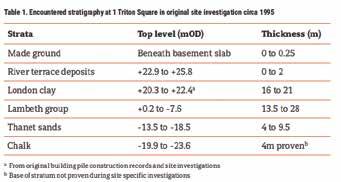
A borehole was drilled outside the building to confirm the design parameters of the London clay and inspection pits and probing were carried out at eight locations to confirm the ground and groundwater conditions immediately below the basement slab. An intrusive investigation was completed using a combination of vertical and inclined concrete coring to primarily confirm the diameter and concrete condition near the head of selected piles. It was not necessary to confirm the pile length or pile reinforcement due to the detailed records available; however, pile diameter and concrete condition was confirmed at two locations. For description and laboratory testing, 100 mm (four inches) diameter vertical and inclined cores of the basement slab, integral pile caps and piles were recovered.
New small diameter bored piles were used to strengthen the existing foundations, combined with a retrofitted settlement reducing piled raft. The design solution for the modified building started as a foundation system of two, four or six small

























diameter piles installed within the basement adjacent to existing piles but evolved into a hybrid solution of a piled raft with settlement reducing piles within the central area of the building, taking advantage of lower piling demands from the raft action as the typical case. Elsewhere, where it was not practicable to extend the raft, isolated strengthened pile caps were adopted, and the factor of safety was provided by the existing and strengthening piles working as a group.
A preliminary and working maintained load test was carried out when the building was originally constructed. The tests to a maximum load of 6,200 kN (1,400 kip) confirmed the design approach, the factor of safety of 2.0 and α = 0.5, in accordance with the design basis. To validate the original building load tests and numerical analysis, the graph was normalised to compare with a database of maintained load test piles. The piles had a length/ diameter of 10–15 and fell within the envelope from the case studies.
The normalisation enabled the expected pile load-settlement behaviour for other 1.2 m (four feet) diameter and 1.8 m (six feet) piles to be estimated. This allowed initial estimation of the distribution of load increase between strengthening raft and existing piles. The load transfer mechanism was then investigated numerically for compatibility of the existing piles, new piles, and ground-bearing raft as a soil structure interaction problem. The finite element analysis software LSDYNA used the BRICK constitutive soil model and was built up from single piles to pile groups, before full 3D analysis of the building. As part of this process, the normalised measured pile test behaviour was used to check the design finite element analysis calculated response for single piles. The check provided
confidence in the numerical analysis to reasonably calculate movements of the existing retained structure and thereby facilitated optimisation of the strengthening piles to control movements to acceptable levels.
An idealised load-displacement curve for a pile was loaded
Risk evaluation flowchart for foundation reuse.

to the new design load (NDL) greater than as-built working capacity, resulting in additional settlement. The load settlement behaviour becomes nonlinear soon after the working capacity, which is due to the unusual proportions of the piles as large diameter in relation to length, therefore mobilising their ultimate shaft capacity at close to the working capacity. For this reason, caution was adopted in the reuse assessment and strengthening design. The main residual risk was unidentified construction defects, durability issues and any deterioration in the last 25 years since original construction. This was mitigated through use of structural movement during construction, an approach agreed with the insurers.
A risk level was assigned to each pile location. These were defined by comparing the NDL with the existing realistic load below which the risk is minimal, the original working capacity where risk is low and the new assessment of the original working capacity where risk is medium. Where demand exceeded the new assessment of pile capacity, strengthening was identified to mitigate high-risk cases. Due to the significant increase in massing, the majority of piles fell within the “high-risk category.” For this case the ratio of load increase is expressed as a percentage, up to 260 per cent of the existing loading, but typically was around 140 per cent.
The addition of new storeys increased the vertical loading significantly, which was considered in combination with the increased horizontal loading also applied. A structural connection was required into the existing piles to allow load to be transferred from the existing column and pile to the new raft or pile caps. Shear/moment transfer was facilitated
through a structural connection detail from existing pile to strengthened raft/new pile cap. The basement slab was first removed surrounding the existing pile and column. A detail was developed by coupling all existing horizontal reinforcement in the top of the pile (existing basement slab reinforcement) with new bars fully anchored into the new raft. One layer of 13 bars 25 mm (one inch) in diameter was dowelled around each 1,800 mm (70 in) pile, or 12 bars of 25 mm (one inch) diameter to a 1,200 mm (47 in) pile. Shear transfer at the construction joint between the new and existing concrete is through a combination of friction, interlocking and dowel action. While the shear connection detail was designed assuming dowels would be installed through the original steel pile casing, the casing was removed to facilitate dowel installation, thus providing enhanced connection through friction and interlocking between the new and existing concrete.
As a result of the partial infilling of the original atrium, the number of floors supported by six columns in the central building area increased from two to 10. In these locations, the typical connection detail between the new and existing concrete would not have sufficed to transfer the excess load into the raft. The solution adopted was to cast the raft continuously over the existing piles, and to locally increase its thickness from 650–1,100 mm (25–43 in) to provide enhanced bending and shear capacity. This required the existing columns to be demolished and rebuilt as part of the strengthening scheme.

Structural dowelling sequence to existing piles.
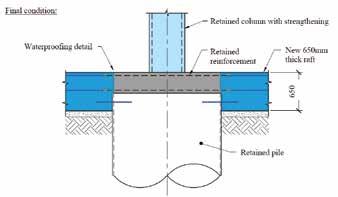
The aim of the scheme was to retain as much of the existing structure as possible, and so the development of a construction sequence had the challenge of supporting the structure through the significant strengthening works. It also presented the constraint of working in reduced headroom (typically 4.4 m [14 ft] or less) within the basement for the foundation strengthening works.
Condition surveys of the existing structure were carried out ahead of construction to highlight existing defects and any need for repairs. A monitoring scheme and trigger limits were developed and reported to the site team, designers, and trade contractors. Automated monitoring was provided by approximately 70 hydrostatic levelling cells installed on the basement slab soffit adjacent to columns. Manual precise levelling of columns using barcode scales was carried out as verification weekly and the manual frequency reduced to fortnightly following concrete works and then monthly during services and façade installation.
Small Diameter Piling — Construction of the small diameter piled foundations took place between May and July 2018. Pile locations were enabled by localised demolition of the existing slab. A sectional flight auger technique was used to construct 188 No. 450 mm (18 in) diameter piles in approximately 4.4 m (14 ft) headroom within the existing basement using the slab as a platform. Piles were cased temporarily to a minimum of one metre (three feet) into the London clay to exclude groundwater, and spoil was removed by flighting the auger once the scheduled toe level was reached. Production rates were approximately four to six piles per day using two or three Klemm 702 rigs and overall duration of the piling was eight weeks. Progress generally was without issue; however, difficulties were encountered installing the concrete tremie pipe at some pile locations.
Pile Cap and Raft Construction — Pile cap and raft construction in the basement was sequenced to follow the piling works, while leaving enough basement slab in place as a diaphragm to restrain the out of balance earth pressure from the basement walls. Strengthening piles were broken down to trim level using mechanical breakers after saw cutting the circumference. In the six locations where the basement columns were replaced, a table frame was used to support the ground floor above. The table frames were supported on plunge columns embedded within the permanent works strengthening piles. Two tower cranes to enable construction also made use of the permanent works strengthening piles in the temporary case.
Ground-bearing raft formations varied from intact London clay to medium dense gravel, prepared to achieve the design requirements. Groundwater was encountered within the granular material and was controlled using trench sheets and local sump pumps. In addition, water from dust suppression and cutting was bunded to protect clay formations from softening. Granular formations were compacted using light vibratory plant and blinding concrete was cast to protect formations and provide a working platform to form the dowelled connections to the existing large diameter piles. A cover meter was used to locate existing reinforcement in exposed pile heads ahead of drilling to receive resin anchored
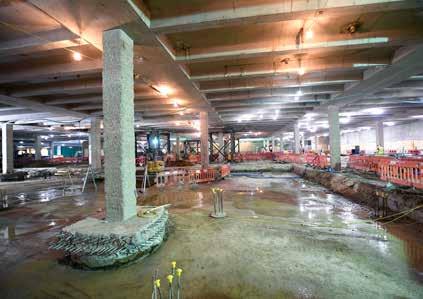
The increase in vertical loading also required most of the existing columns to be strengthened. A variety of methods were used to achieve this, including the welding of steel plates or concrete encasement for steel columns located in the four cores. For concrete columns located outside the cores, concrete encasement was typically used, and to a lesser extent, fibre reinforced polymer wrapping for those experiencing only a moderate increase in loading at the top of the existing concrete frame.

The straight shafted London clay piles supporting the existing building were successfully reused and locally strengthened while the structure remained in place, enabling the net internal area of the building to be increased by around 130,000 sq ft (12,100 m2) or approximately 70 per cent. The basement level floor to ceiling height and usability of the basement space was maintained, allowing servicing plant to be accommodated in the basement to serve the new larger floorplate.
Risks and uncertainties associated with a structural reuse scheme were carefully considered and presented to the client, who fully embraced the sustainable aspirations of the design team and mitigated throughout the design and construction. The comprehensive record information sourced from Arup archives minimised the requirement for intrusive investigations and gave confidence in future load carrying capacity of the existing piles. The eventual optimised solution was a slender, 650 mm (25 in) thick retrofitted piled raft using the existing piles and a greatly reduced number of strengthening piles compared to conventional reuse and design approaches. Control of movement to the retained existing structural frame was key and was achieved by 3D numerical analysis calibrated by pile load test data. The monitoring of the existing structure during the refurbishment showed movements consistent with the predictions for the strengthened foundation system.
By retaining a high proportion of the existing structure, the refurbished building realised significant material savings. An estimated 35,000 tons of concrete and 1,900 tons of steel were reused; 8,200 tons, or close to a quarter, of the concrete reused was in existing piles. In addition, new concrete structures made extensive use of cement replacement (70 per cent of ground granulated blast-furnace slag for most elements). Overall, the structural embodied carbon associated with the redevelopment of 1 Triton Square averaged as 136kg CO2e/m2 (28 lb CO2/ sq ft), achieving a Structural Carbon Rating Scheme “A” rating, which compares favourably to the October 2020 design target value of 350 kg CO2e/m2 (72 lb CO2/sq ft) for a new build.
Reuse and circular economy initiatives ran through several aspects of the design including refurbishment of elements of the façade and using recycled paving and roof materials. Efficient building services designs also meant that despite the significant increase in floor areas, the existing basement plant space proved sufficient in the new scheme. The scheme has achieved a Building Research Establishment Environmental Assessment Method Outstanding rating and Highly Commended in the Business Green Leaders Awards 2021.
Estimated quantities of material retained, by element of structure.

The success of the 1 Triton Square project was the result of a tremendous collaborative effort across the wider project team and supply chain. The authors acknowledge particular contribution from the project team members including British Land (client), Lendlease (contractor), Geo-Instruments (monitoring contractor), Concept Ltd (site investigation contractor) and Keltbray (piling contractor). Arup colleagues H. Shields, D. Patel, A. Robertson, A. Pillai and D. Yang and others contributed to the geotechnical and structural design. Specialist advice on concrete was provided by B. Marsh and I. Feltham, also from Arup.
Henry Tayler, M.Eng., C.Eng., MICE, MAPM, is an associate geotechnical engineer at Arup’s London geotechnical group. After completing a bachelor’s in civil engineering at Oxford University, he has worked on a number of challenging basement and infrastructure projects located mainly in the Middle East and the U.K. Tayler is a chartered civil engineer, member of the Institution of Civil Engineers, British Geotechnical Association, Association of Project Management and a U.K. Registered Ground Engineering Professional.
Eric Sturel, C.Eng., is a structural engineer with experience in leading multidisciplinary teams and a chartered member of the Institution of Civil Engineers. After completing a master’s in civil engineering at the École Nationale des Ponts et Chaussées in Paris, he worked for 17 years at Arup’s London and Shanghai offices on a variety of large-scale projects in the U.K., China, France and the Middle East. He is currently taking a career break ahead of relocating to his home city, Paris. l
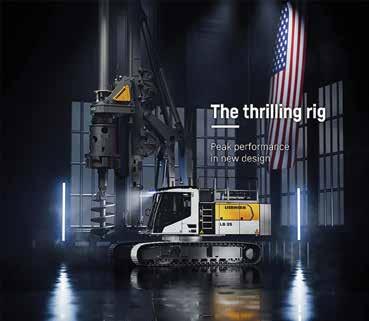

At this year’s International Foundation Congress & Equipment Expo (IFCEE) in Dallas, Liebherr presented attendees with the exclusive opportunity to explore a diverse range of Liebherr products. Machines from the deep foundation and crawler cranes segment, including the LB 25 drill rig with BAT 250 rotary drive, the LRH 200 piling and drilling rig with an H6 hydraulic hammer, and the LR 1100.1 crawler crane were on display. Liebherr also exhibited the THS 110 D-K crawler concrete pump from the concrete technology product segment. IFCEE was an excellent platform to showcase the synergy of Liebherr’s diverse offerings as they work together to serve the varied needs of the deep foundation and construction industries.
“Our participation in IFCEE is a testament to Liebherr’s commitment to providing leading technology and innovation to the deep foundations industry. We are thrilled to have the opportunity to engage in meaningful
dialogue and contribute to the advancement of our industry,” notes Shane Kuhlmey, Divisional Director of Crawler Cranes and Foundation Equipment, Liebherr USA, Co.
As a turnkey supplier in deep foundation engineering, Liebherr offers cuttingedge piling and drilling equipment as well as attachments. Liebherr deep foundation machines are ideally suited for the construction of cast-in-place piles and slurry walls, for the installation of sheet piles or for soil improvement. Additionally, the deep foundations machines pair seamlessly with concrete technology and crawler cranes to provide customers with an integrated fleet of equipment to make each job cost and time effective.
The LB 25 is the successor of the proven rotary drilling rig LB 20-230. The LB 25 offers a modular design for quick and easy assembly, as well as strong
winches for high performance under challenging conditions. The drill rig is equipped with a leader top designed for different drilling axes providing customers the ability to utilize the rig in multiple applications including Kelly drilling, double rotary head drilling and continuous flight auger drilling.
The focus of the LB 25 drilling rig is to provide greater mobility; therefore, it can be transported fully mounted. This ensures quick transport of the machine between different job sites, saving customers time and money. The rig is also equipped with an innovative control system offering many program and control options for various drilling methods, making it easier for the operator to maneuver quick working cycles.
The combined piling and drilling rig LRH 200 offers flexible leader kinematics, enabling very high radii
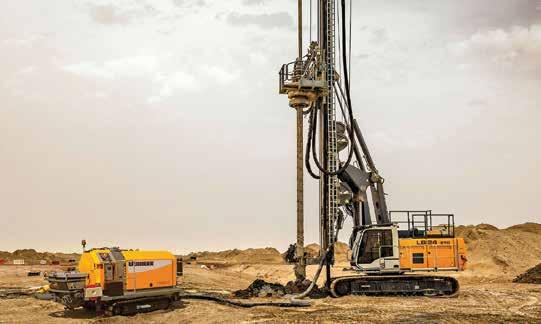


and inclinations of up to 18 degrees in all directions. A flexible in-house hammer concept with various weight configurations allows concrete, steel, or timber piles to be optimally installed. The new LRH 200 offers a large range of applications for operators. When configured as a drilling rig, a highperformance drilling drive provides the necessary torque for common methods such as continuous flight auger, full displacement, and down-thehole drilling processes. The compact machine is based on the proven LB 30 basic machine from Liebherr’s range of drilling rigs. The compact rig can be transported in one piece with the leader mounted and is consequently ready for operation on the job site in a short time.
The Liebherr crawler concrete pump is ideal for bored pile foundations to supply concrete to any foundation machine. This work involves deep drilling holes to prepare the ground for construction. When the drill is pulled out, these holes are filled with concrete. In the process, the concrete is conveyed down via a tube in the middle of the drill. The crawler concrete pump travels in parallel with the drilling rig to the various pile locations, with the concrete hose remaining connected to the drilling rig. The crawler concrete pump and the drilling rig are connected by radio and can communicate and exchange information on the construction site.
The robust crawler concrete pump is available in two performance classes, the THS 110 D-K and the THS 140 D-K. Both types are equipped with powerful six-cylinder engines. The reliable pump units run very quietly and have minimal line surge on the foundation machine mast. The hydraulic system
is particularly easy to maintain thanks to the open loop hydraulic circuit. The design also facilitates the replacement of wearing parts, which greatly simplifies servicing.
The LR 1100.1 is the smallest crawler crane of the successful LR series. This crane was featured at the IFCEE demo site, where operators showcased its many features. The crane is powered by an efficient 230 kW diesel engine with a max load capacity of 110 USt. The LR 1100.1 crawler crane is equipped with a self-assembly system with the option to remove/attach the side frames or the boom foot and crawlers can remain attached during transport, making teardown and subsequent assembly quicker and easier even while weighing less than 100,000 lbs.
The Liebherr Group is a family-run technology company with a highly diversified product portfolio. The company is one of the world’s largest manufacturers of construction machinery. It also offers high-quality, user-oriented products and services in multiple other areas. Today, the group consists of more than 140 companies across all continents. In
2022, it employed more than 50,000 people and achieved combined revenues of over 12.5 billion euros. Liebherr was founded in 1949, in Kirchdorf an der Iller in southern Germany. Ever since then, the company’s employees have been committed to satisfying customers with advanced solutions and to helping drive technological progress. l
Interpipe Inc. is a steel pipe distributor of new and used structural steel pipe. We have two large stocking locations of Seamless, ERW, Spiralweld and DSAW pipe.
ONTARIO
Local: (905) 679-6999
The crane is equipped with a strong steel structure, providing a longer service life and less wear for customers, as well as a modern cab featuring improved airflow, optimized field of vision, and increased noise protection. The LR 1100.1 also offers gradient travel aid for safe movement on uneven terrain by automatically calculating the centre of gravity and ground pressure visualization and calculating the current ground pressure of the machine in real time, providing a safer operation.
Interpipe Inc. is a steel pipe distributor of new and used structural steel pipe. We have two large stocking locations of Seamless, ERW, Spiralweld and DSAW pipe.
ONTARIO
3320 Miles Road, RR#3
3” OD – 48” OD in a variety of wall thicknesses are stocked in both locations.
Interpipe Inc. is a steel pipe distributor of new and used str uctural steel pipe. We have several stocking locations of Seamless, ERW, Spiralweld and DSAW pipe.
Piling Pipe 80,000 min yield seamless pipe for Micro Piling.
3320 Miles Road, RR#3
Mount Hope, Ontario L0R 1WO
Toll Free: (877) 468-7473 Fax: (905) 679-6544
Mount Hope, Ontario L0R 1WO
Local: (905) 679-6999
Local: (905) 679-6999
Toll Free: (877) 468-7473
Toll Free: (877) 468-7473
3" OD – 48" OD in a variety of wall thicknesses are stocked in all three locations.
3” OD – 48” OD in a variety of wall thicknesses are stocked in both locations.
Piling Pipe 80,000 min yield seamless pipe for Micro Piling.
Seamless and ERW pipe for Driven Piles, Screw Piles and Drill Piles.
Piling Pipe 80,000 min yield seamless pipe for Micro Piling
Seamless and ERW pipe for Driven Piles, Screw Piles and Drill Piles.
Seamless and ERW pipe for Driven Piles, Screw Piles and Drill Piles.
Liebherr USA, Co. based in Newport News, VA provides sales and service on behalf of ten different Liebherr product segments: earthmoving, material handling, mining, mobile and crawler cranes, tower cranes, concrete technology, deep foundation machines, maritime cranes; components, and refrigeration and freezing.
Large Diameter pipe for Driven Pile or Caissons.
Large Diameter pipe for Driven Pile or Caissons.
Large Diameter pipe for Driven Piles or Caissons


Fax: (905) 679-6544
QUEBEC
Fax: (905) 679-6544
805 1 ère Avenue
QUEBEC
QUEBEC
805 1 ère Avenue
805 1 ère Avenue
Ville Ste. Catherine, Quebec J5C 1C5
Ville Ste. Catherine, Quebec J5C 1C5
V ille Ste. Catherine, Quebec J5C 1C5
Local: (450) 638-3320
Local: (450) 638-3320
Local: (450) 638-3320
Toll Free: (888) 514-0040
Toll Free: (888) 514-0040
Toll Free: (888) 514-0040
Fax: (450) 638-3340
Fax: (450) 638-3340
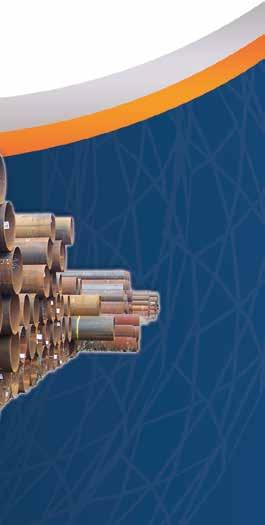
DFI recently announced the formation of a Student Engagement Committee. The committee, with support from DFI Educational Trust, will develop consistent student opportunities and experiences that raise awareness of career opportunities in our industry, grow interest in DFI and provide members the opportunity to interact with prospective employees at school and DFI events.
“DFI recognizes that the future of our industry depends upon our ability to encourage and engage promising individuals to consider careers in the deep foundations industry,” says Theresa Engler, DFI executive director. “This new, enthusiastic committee is taking charge of the recently launched University Ambassador Program as well as student activities at DFI and industry events, and more to follow.”
The chair of the Student Engagement Committee is Chris Woods, P.E., G.E., BC.GE, C.Eng. MIEI, F.ASCE, LEED AP BD+C, vice president at Densification, Inc. Prior to joining Densification, Woods spent over 13 years as a geotechnical consultant practicing throughout the eastern seaboard of the United States, as well as overseas. He has more than 20 years of experience in geotechnical engineering, with a particular
specialization in ground improvement; he has additionally been involved with the design of shallow and deep foundation systems, evaluation of earth slope stability, design of retaining walls, geotechnical instrumentation monitoring and extensive construction oversight.
Woods is deeply involved with Deep Foundations Institute (DFI), serving as technical program co-chair of the 2022 DFI Annual Conference, a founding member of the DFI Podcast Committee and one of the “Live at Game Day” series hosts, a member of the DFI Journal Editorial Board, and a longstanding member of the Ground Improvement committee. He is also an active member of the ASCE Foundation Standard Committee and has been an active member of the ASCE and the Geo-Institute, serving as a member of the Geostrata Editorial Board since 2015, and as a member and leader of the Soil Improvement Committee. He earned his bachelor’s degree in civil engineering from Purdue University and his master’s degree in geotechnical engineering from Virginia Tech.
Learn more about the Student Engagement Committee at https://dfi.org/communities/student-engagement/. l


Originally built for the dock building industry, Pile Master® air hammers are designed for driving timber, h-pile, pipe, and prestressed concrete piles. With an optional sheet pile adapter, the Pile Master is also a great choice for driving steel sheet piles in soil conditions where a vibratory hammer cannot drive the sheets to the required depth. Hammers can be guided for use with 21” or 26” pile driving leads or freely suspended with an extended base. Pile Master air hammers are known for their efficiency—producing up to 90% energy transfer into the pile while using an air compressor as small as 185 CFM.
Request more information today.
904 874 6557
pilemasterUS.com/piling-industry-ca






Excavator-mounted for versatility on job sites
30-ft max pile length
